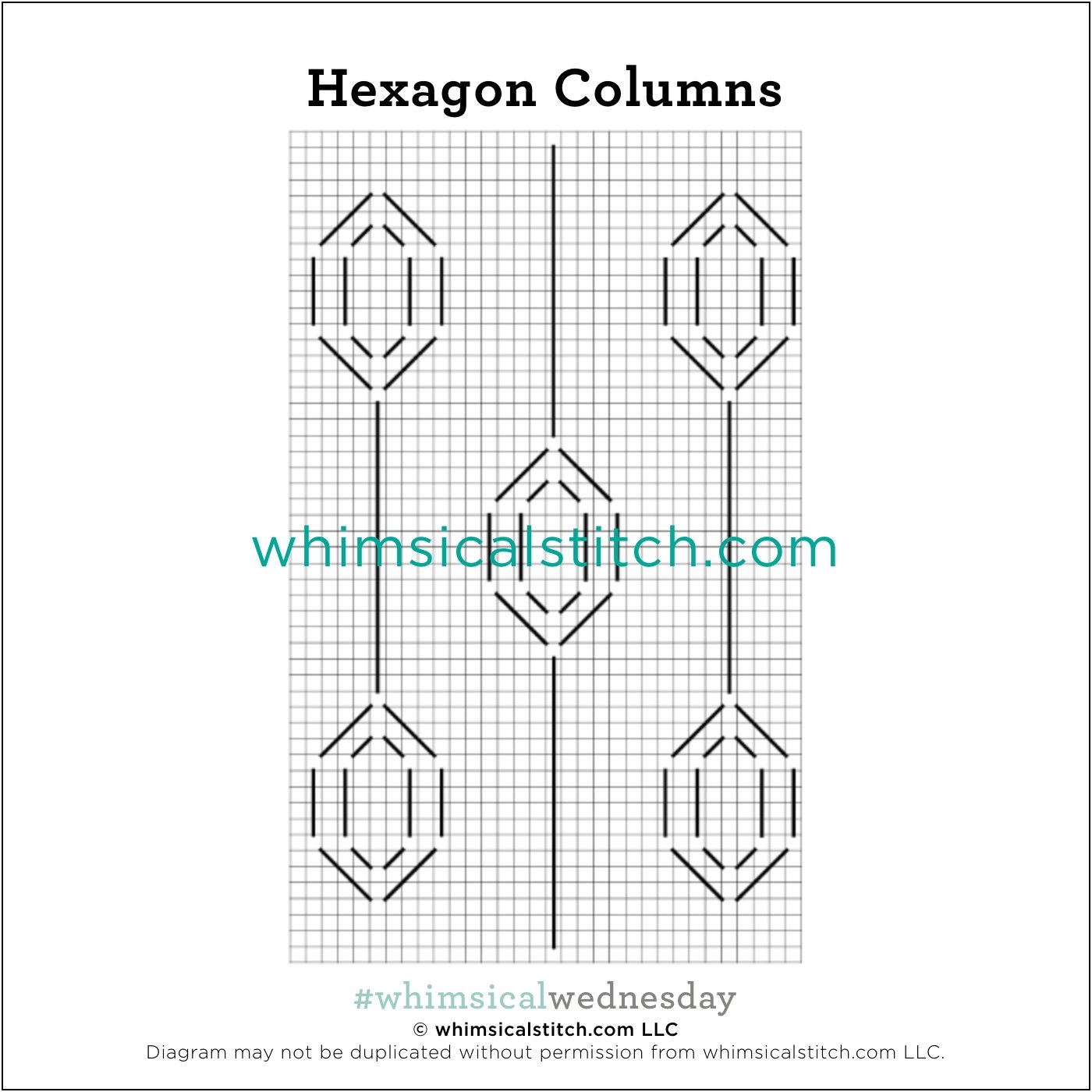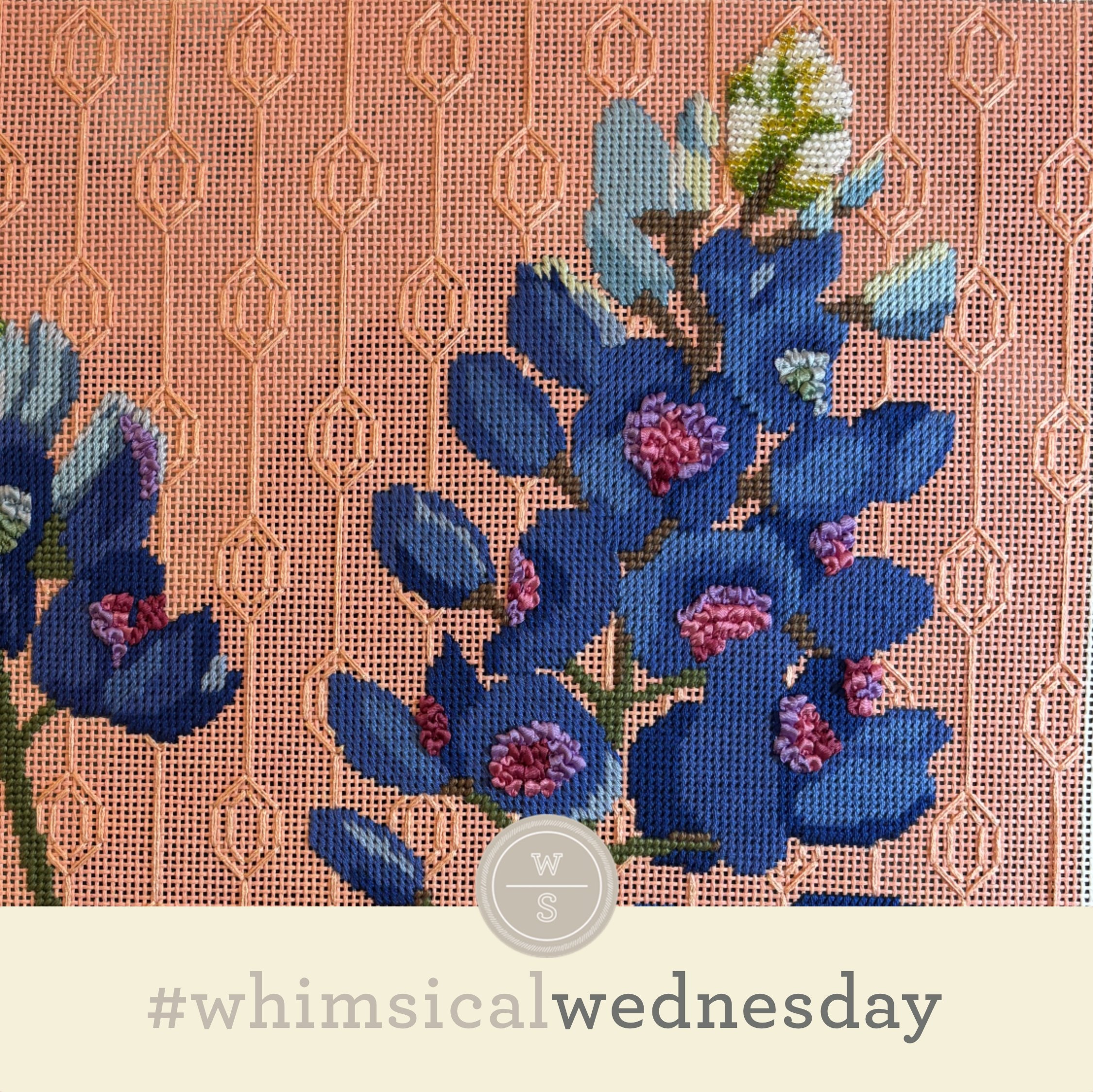Today’s stitch is an elegant open stitch that is the perfect balance to a more densely stitched area. I absolutely love it for backgrounds.
The stitched sample is from Blue Ridge Stitchery’s Bluebonnets canvas. The background uses two strands of peach Petite Silk Lame on 13M. The stitch uses a modified backstitch to navigate each column.
The peach on the Petite Silk Lame was a perfect choice. I’m sure some are asking why use Petite when you have Silk Lame 18 or 13? I chose two strands of Petite Silk Lame because it was the right color and,I didn’t want to minimize the height of the background.
The stitch is adaptable to other sorts of spaces by leaving fewer rows between the columns. It could be a really interesting stitch for a tall Santa or a large pumpkin. I would love to see the Santa stitched with alternating columns of Petite Very Velvet and a size 12 or 16 Kreinik. I recommend the columns be spaced three rows apart instead of the six rows on the diagram. I would stitch a large pumpkin with two related shades of orange Silk Lame.
As you are auditioning stitches (from any stitch source), count the number of canvas threads on the diagram that match your mesh size. And there you have what an inch of the stitch will look like. Evaluate that against the area where you plan to use the stitch and make your final decision. If you start integrating this step into your stitch selection process, you may be surprised at how many stitches you think are large are much smaller than you realize.
By (sometimes) including this step in my own process, I find I am now integrating much longer stitches than I ever thought I would. I used to think a stitch six rows long was super big. I have very much changed my tune, which has helped me expand my creativity, especially for large-space stitches.
Today’s stitch diagram, along with all other #whimsicalwednesday and #smallspacesunday stitch diagrams, can also be found on a Pinterest board here. Be sure to follow whimsicalstitch.com on Facebook, Pinterest, Instagram, and Twitter.
If you like what you see on this blog, there's more. Mary’s Whimsical Stitches is a series of four books offering contemporary how-to collections of more than 200 stitches (in each volume) for all stitchers, regardless of skill level. All books include updated and sequenced diagrams from this blog, plus a collection of all-new stitches from private lessons and other class projects. Visit here to find a needlepoint retailer that carries my books.
New to needlepoint or looking for a refresher? Please download a handy how-to guide covering basic needlepoint stitches and stitch compensation techniques along with new top-line information on needlepoint materials and tools, how to handle threads, and other helpful needlepoint resources.
whimsicalstitch.com also sells Stitch Guides and Stitch Concepts for Melissa Shirley Designs, Zecca Designs, Sandra Gilmore, Purple Palm, Maggie, and Penny MacLeod, and many more. Click here to see the newest guides and click here to see the entire collection.
I hope you have the perfect spot for this stitch! Please enjoy! Have a wonderful #whimsicalwednesday!
A Note about Diagrams
I use color in diagrams to make them as clear as possible. The primary function of different colored lines is to illustrate a stitch sequence. For example, the layering of colors demonstrates you add them in that order. They can also provide ideas on integrating additional threads (one line for each color). Or, you can use the same thread for all color lines. That's where I encourage you to use your imagination for the space you are stitching!




